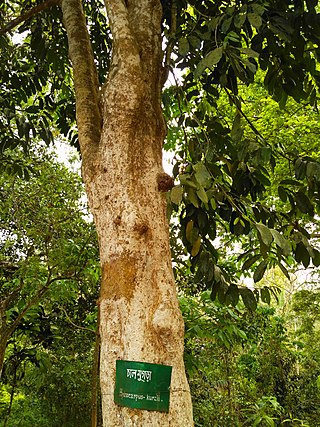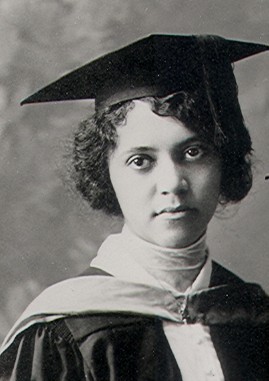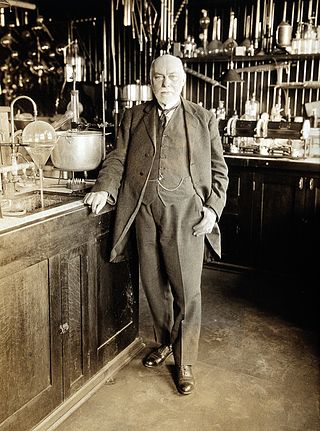
The almond is a species of tree from the genus Prunus. Along with the peach, it is classified in the subgenus Amygdalus, distinguished from the other subgenera by corrugations on the shell (endocarp) surrounding the seed.

Dapsone, also known as 4,4'-sulfonyldianiline (SDA) or diaminodiphenyl sulfone (DDS), is an antibiotic commonly used in combination with rifampicin and clofazimine for the treatment of leprosy. It is a second-line medication for the treatment and prevention of pneumocystis pneumonia and for the prevention of toxoplasmosis in those who have poor immune function. Additionally, it has been used for acne, dermatitis herpetiformis, and various other skin conditions. Dapsone is available both topically and by mouth.

Terminalia bellirica, known as baheda, bahera, behada, beleric or bastard myrobalan, Persian بلیله (Balileh), Sanskrit: Vibhītaka बिभीतक, Aksha अक्ष) is a large deciduous tree in the Combretaceae family. It is common on the plains and lower hills in South and Southeast Asia, where it is also grown as an avenue tree. The basionym is Myrobalanus bellirica Gaertn.. William Roxburgh transferred M. bellirica to Terminalia as "T. bellerica (Gaertn.) Roxb.". This spelling error is now widely used, causing confusion. The correct name is Terminalia bellirica (Gaertn.) Roxb.

Baby oil is, in general terms, an inert oil for the purpose of keeping skin soft and supple. It is often used on babies for the purpose of maintaining "baby-soft" skin, but it is also often used by adults for skincare and massage.

Canarium ovatum, the pili, is a species of tropical tree belonging to the genus Canarium. It is one of approximately 600 species in the family Burseraceae. C. ovatum are native to the Philippines. They are commercially cultivated in the Philippines for their edible nuts and is believed to be indigenous to that country. The fruit and tree are often vulgarized with the umbrella term of "Java almond" which mixes multiple species of the same genus, Canarium.
Natural skin care uses topical creams and lotions made of ingredients available in nature. Much of the recent literature reviews plant-derived ingredients, which may include herbs, roots, flowers and essential oils, but natural substances in skin care products include animal-derived products such as beeswax, and minerals. These substances may be combined with various carrier agents, preservatives, surfactants, humectants and emulsifiers.

Marula oil is extracted from the kernels (nuts) of the fruits of the Marula tree, from the family Anacardiaceae. There are two types of marula oil, the oil extracted from the seeds and the oil extracted from the nut's hard shell. Marula oil is traditionally used in cosmetics, in food as a cooking oil and meat preservative and to treat leather. Marula oil can also be used as body lotion. In Namibia Marula fruit is processed into a range of juices, jellies and jams.

Hydnocarpus kurzii is a species of plant in the family Achariaceae. It is found in India and Myanmar. It is used as a traditional medicinal plant.

Gynocardia is a genus of dioecious evergreen tree belonging to the Achariaceae family, containing the sole species Gynocardia odorata. The trees grow up to 30 m tall. The species is found in moist forests of mountain valleys in South Asia - India, South-east Tibet and Yunnan in China, Bangladesh, Nepal, Bhutan and Myanmar.
Heibei Okamura (1852–1934) produced Japan's finest "Okamura's" chaulmoogra oil,, between about 1892 and 1944 at Sakai, Osaka, Japan. Chaulmoogra oil, which is taken from capsular fruits of Hydnocarpus genus trees of Thailand, Indonesia, Malaysia and the Philippines, had been the only one remedy in wide use before Guy Henry Faget proved the efficacy of promin in 1943 Promin started the era of sulfon chemicals and revolutionalized the treatment of leprosy. Okamura was also known for caring for more than 1,000 leprosy patients between 1888 and 1901 in his house.

The history of leprosy was traced to its origins by an international team of 22 geneticists using comparative genomics of the worldwide distribution of Mycobacterium leprae. Monot et al. (2005) determined that leprosy originated in East Africa or the Near East and traveled with humans along their migration routes, including those of trade in goods and slaves. The four strains of M. leprae are based in specific geographic regions where each predominantly occurs:

Alice Augusta Ball was an American chemist who developed the "Ball Method" for making ethyl ester derivatives of chaulmoogra oil, which were used as a treatment for leprosy during the early 20th century. She was the first woman and first African American to receive a master's degree from the University of Hawaiʻi and was also the university's first female and African-American chemistry professor. She died at the age of 24 and her contributions to science were not recognized until many years after her death.

Phulwara oil is extracted from seeds of Phulwara tree. Phulwara Trees are also known locally as Chiuri Trees, Kaeleb Trees, or Butter Nut Trees. Refined Phulwara Oil is marketed as Phulwara Ghee.
Hydnocarpic acid is an unsaturated fatty acid. It differs from most fatty acids by having a cyclic ring system at the terminus, rather than being entirely straight chain. It is found in the oil from plants of the genus Hydnocarpus from which it derives its name.

Sterculia foetida is a soft wooded tree that can grow up to 35 metres tall. Common names for the plant are the bastard poon tree, Java olive tree, hazel sterculia, wild almond tree, and skunk tree.

Isabella Kerr was a Scottish medical missionary who worked in India in the early 20th-century. She created the Victoria Leprosy Centre in Hyderabad. She worked to cure leprosy in India.

Frederick Belding Power was an American chemist who worked in pharmacology, plant chemicals, and on standards in pharmaceutical production. He served as a professor of pharmacy at the Philadelphia College and as director of pharmacy at the University of Wisconsin–Madison. He also served as a chemist for the Wellcome Chemical Research Laboratories in London where he examined Chaulmoogra oil and its use in the treatment of leprosy.
Ernest Muir FRCS, CIE, CMG was a Scottish medical missionary and educator in British-controlled India and Nigeria most noted for his work with Hansen's disease (leprosy).
Chaulmoogric acid is a fatty acid found chaulmoogra oil, the oil from the seeds of Hydnocarpus wightianus. It is an unusual fatty acid which has a cyclopentene ring at its terminus instead of being entirely linear like most fatty acids.















